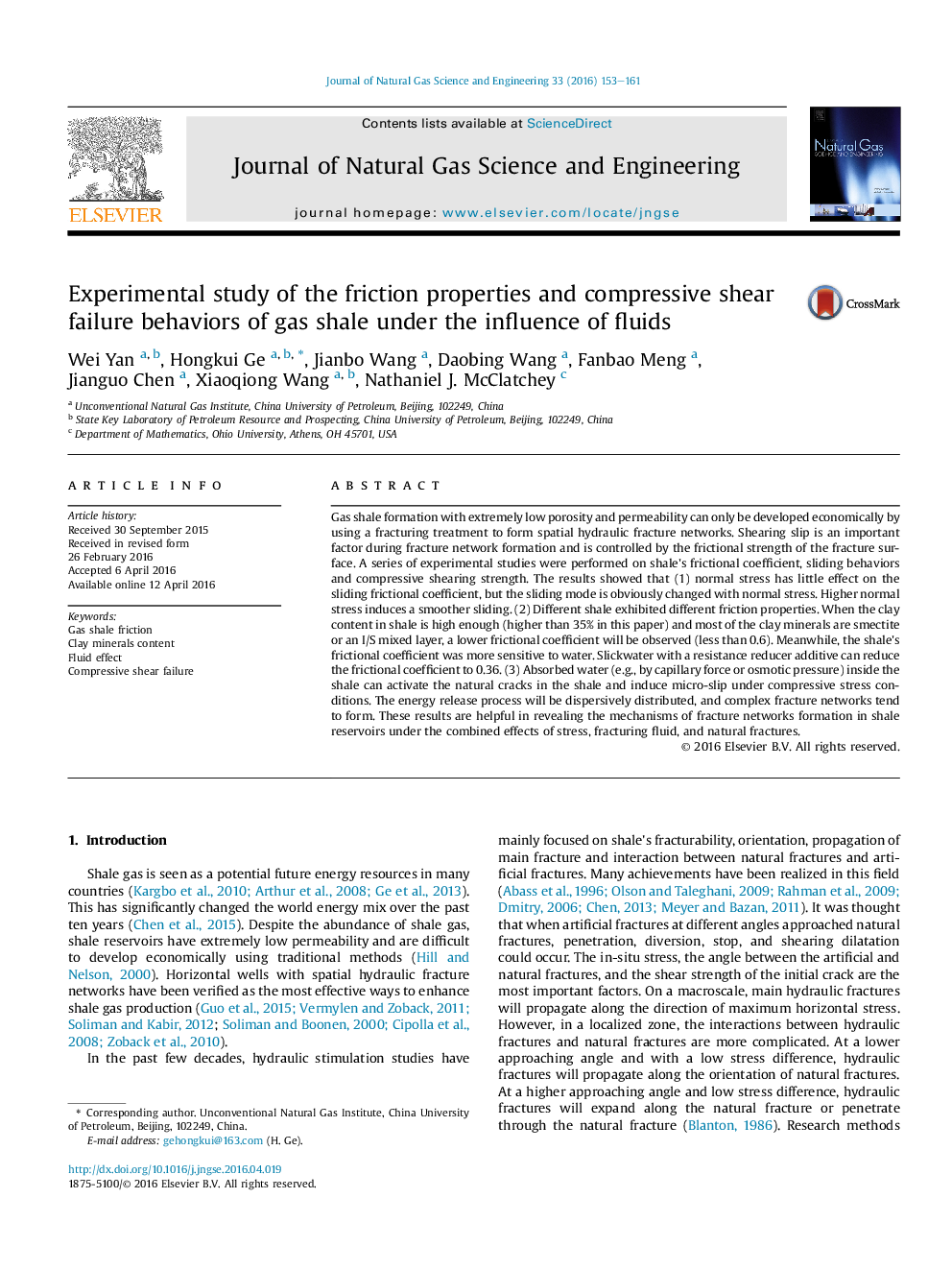| Article ID | Journal | Published Year | Pages | File Type |
|---|---|---|---|---|
| 1757057 | Journal of Natural Gas Science and Engineering | 2016 | 9 Pages |
Abstract
Gas shale formation with extremely low porosity and permeability can only be developed economically by using a fracturing treatment to form spatial hydraulic fracture networks. Shearing slip is an important factor during fracture network formation and is controlled by the frictional strength of the fracture surface. A series of experimental studies were performed on shale's frictional coefficient, sliding behaviors and compressive shearing strength. The results showed that (1) normal stress has little effect on the sliding frictional coefficient, but the sliding mode is obviously changed with normal stress. Higher normal stress induces a smoother sliding. (2) Different shale exhibited different friction properties. When the clay content in shale is high enough (higher than 35% in this paper) and most of the clay minerals are smectite or an I/S mixed layer, a lower frictional coefficient will be observed (less than 0.6). Meanwhile, the shale's frictional coefficient was more sensitive to water. Slickwater with a resistance reducer additive can reduce the frictional coefficient to 0.36. (3) Absorbed water (e.g., by capillary force or osmotic pressure) inside the shale can activate the natural cracks in the shale and induce micro-slip under compressive stress conditions. The energy release process will be dispersively distributed, and complex fracture networks tend to form. These results are helpful in revealing the mechanisms of fracture networks formation in shale reservoirs under the combined effects of stress, fracturing fluid, and natural fractures.
Related Topics
Physical Sciences and Engineering
Earth and Planetary Sciences
Earth and Planetary Sciences (General)
Authors
Wei Yan, Hongkui Ge, Jianbo Wang, Daobing Wang, Fanbao Meng, Jianguo Chen, Xiaoqiong Wang, Nathaniel J. McClatchey,
